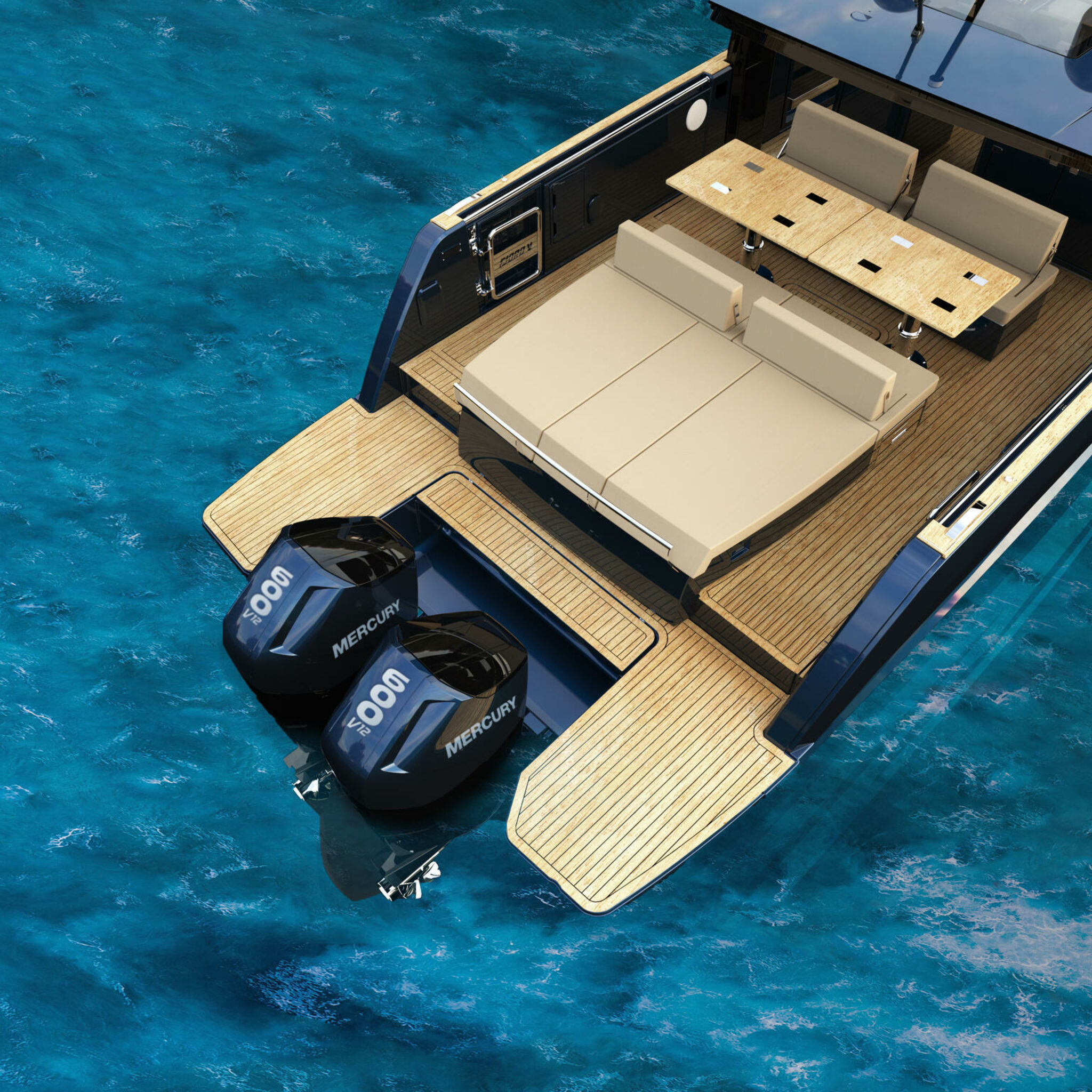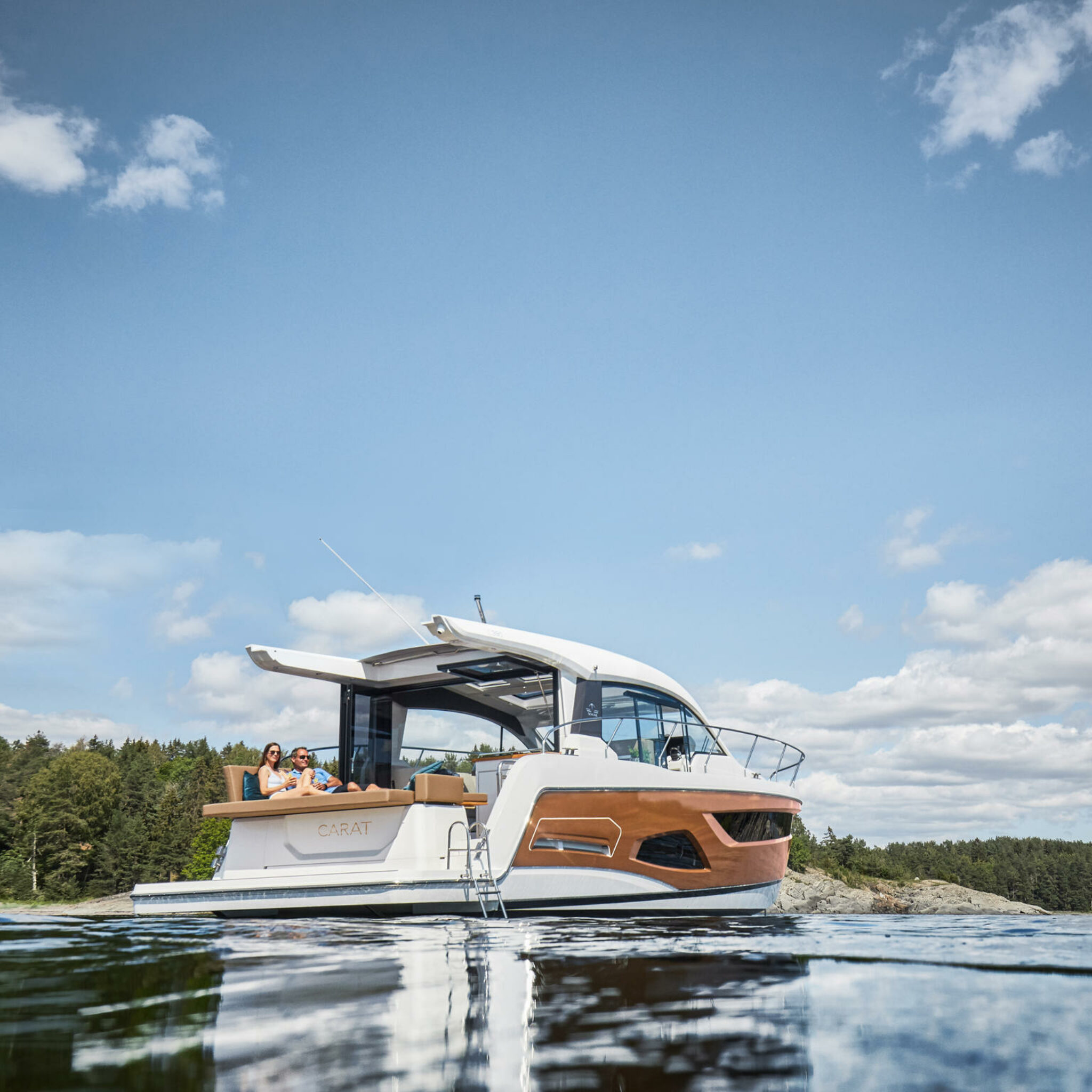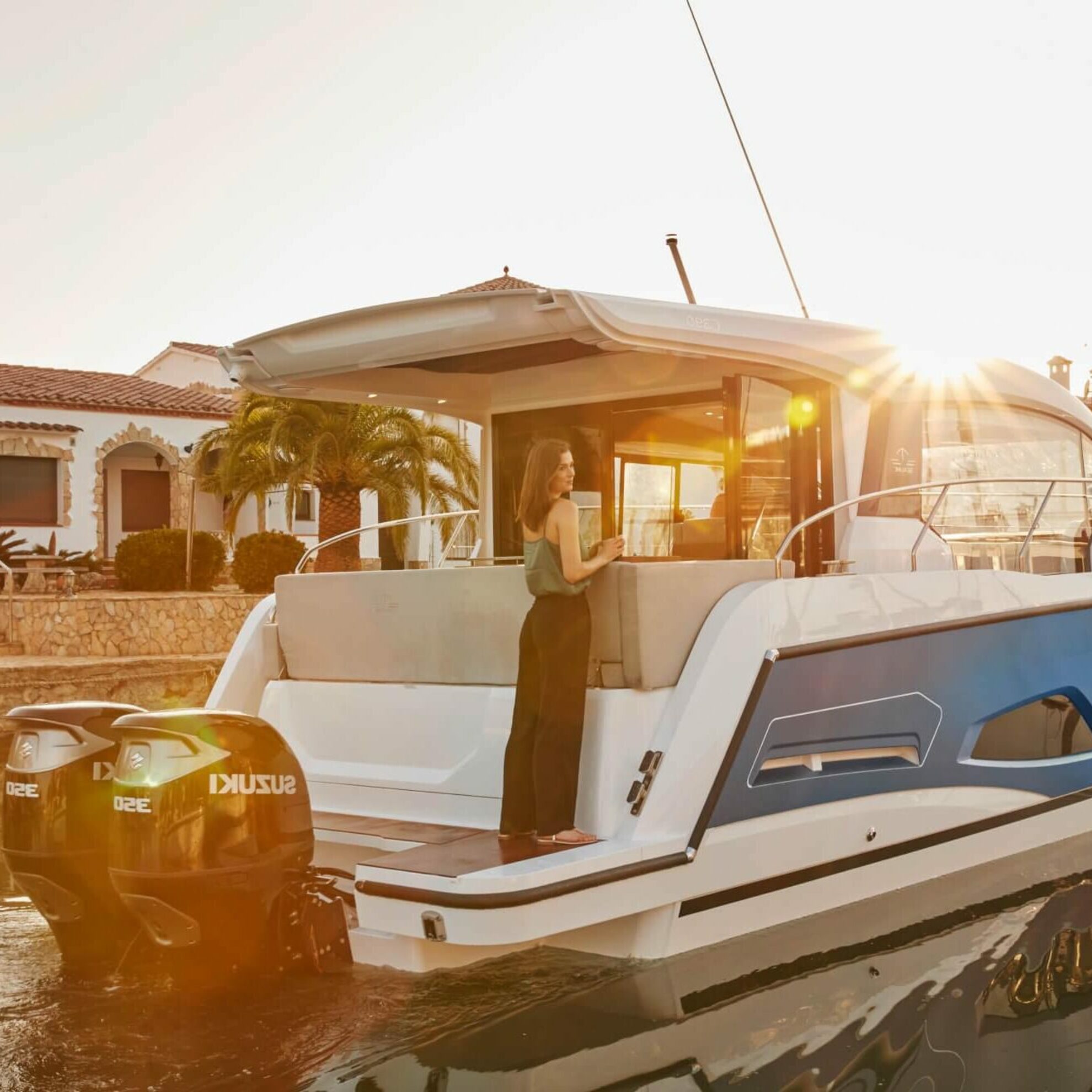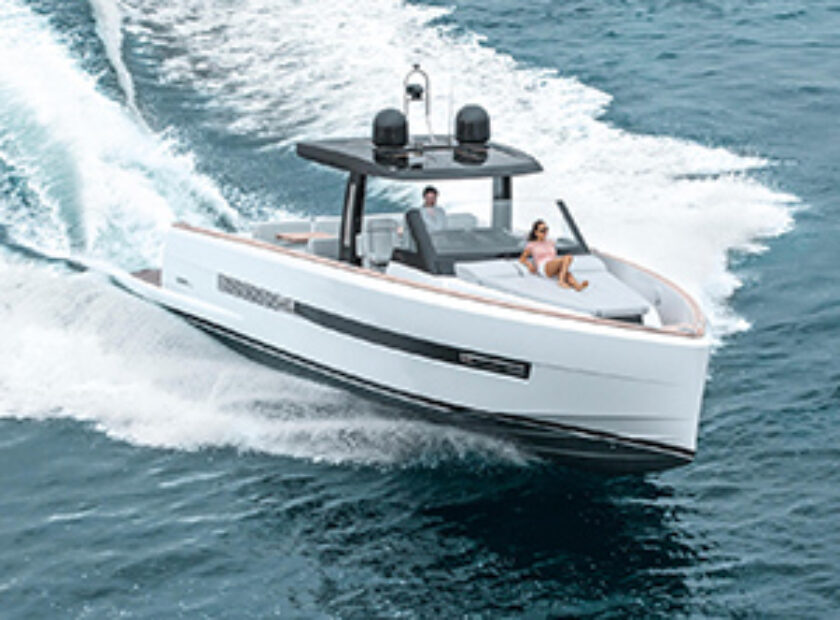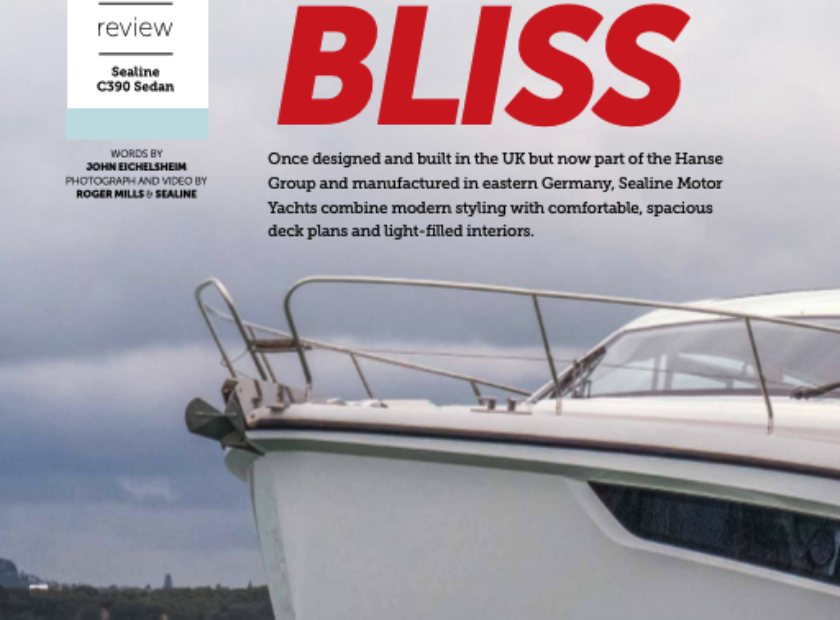There used to be a clear delineation between the type of boats that used inboard engines and those that utilised the advantages of outboards – but that’s not the case anymore.
As conventional engine technology has advanced over the last decade it’s really been outboards that have morphed into new forms. The 2021 release of Mercury’s Verado V-12 600-hp, a veritable monster unit marked a new stage of evolution with features never seen before on an outboard like a gearcase that turned independently from the main body of the engine, a two-speed automatic transmission and a host of other features that made it more powerful, fuel-efficient, and smoother than its predecessors.
For a long time, 40 feet (12.1 metres) and longer was the usual choice for inboards, 30 feet and under (9.1 metres) particularly if you had draft limitations or kept the boat on a trailer, outboards were the favoured choice. But now all that has changed with manufacturers putting outboards on increasingly larger craft.
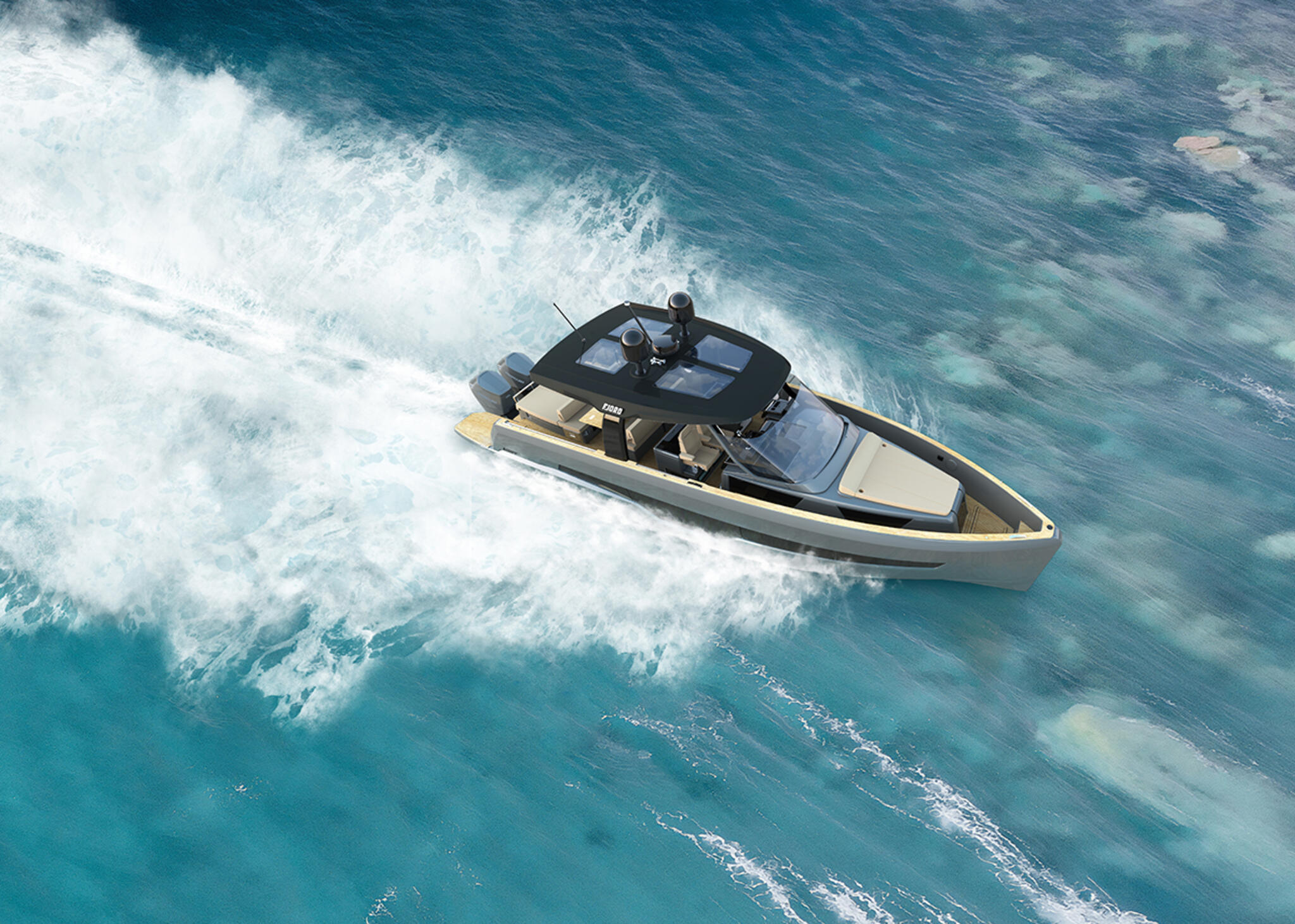
Fjord 41 XP
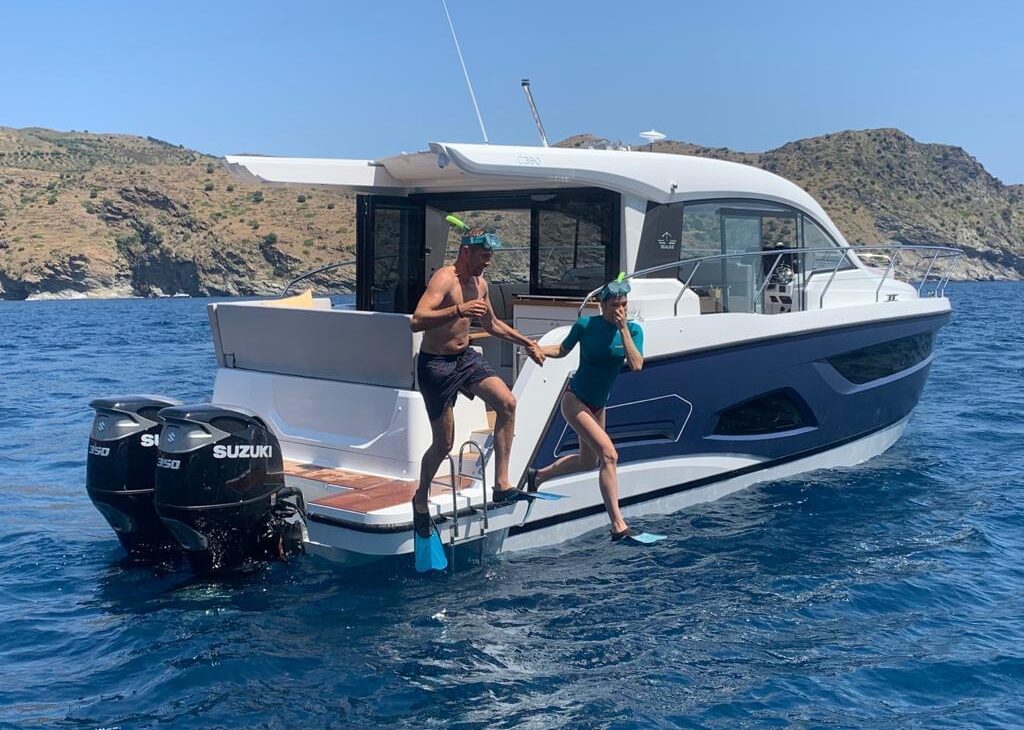
Sealine C390v
Currently the Fjord 41 XP is the biggest outboard powered boat in Windcraft’s power range. At 13.27 metres of just over 43 feet this iconic open-deck day boat is powered by two of Mercury’s massive Verado V-12s giving a top speed of over 40 knots. Even in a slightly more conservative family cruising guise, the Sealine C390v at 12.42m with twin Suzuki 350hp duo-props is capable of hitting the 40knot mark, both models quicker than the respective standard inboard configurations.
How you plan to use your boat will have an important bearing on whether you go inboard or outboard. Traditionally inboards grant you greater cruising range and are quieter as they insulated in the hull, making them more suited to longer offshore operation. Due to their reduced draft outboards can nose right up to a beach or manoeuvre in shallow protected waterways, making them a logical choice for many coastal estuaries.
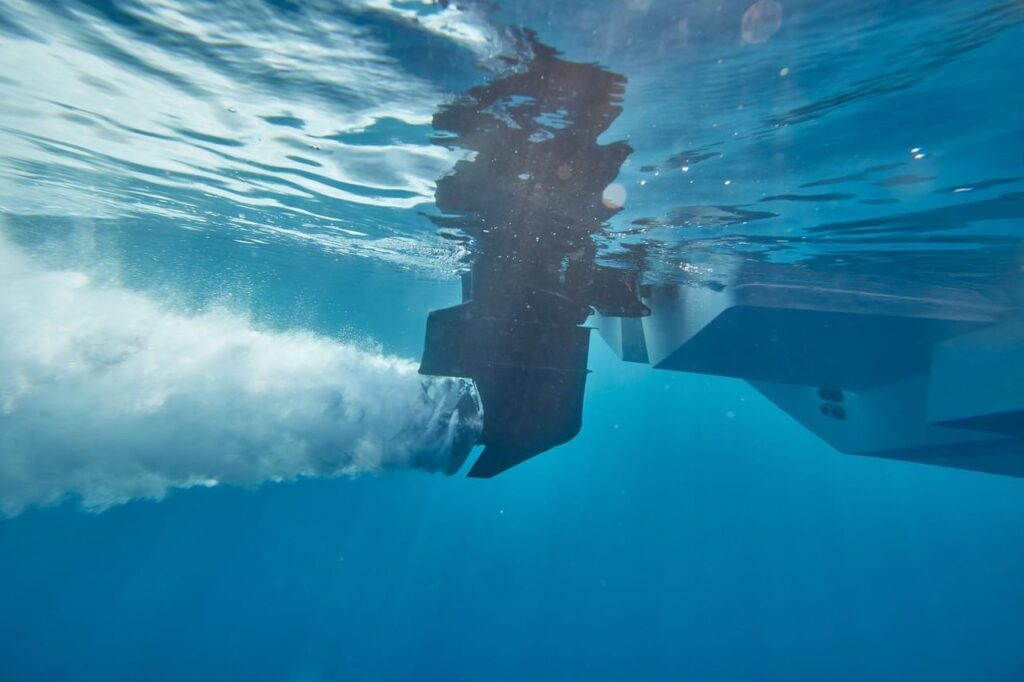
One big difference is fuel type. Almost all outboards run on unleaded petrol, while many inboards are diesel. Another consideration is power and torque versus speed. Power and torque are strengths of diesel inboards, so they’re often better for pushing very large, heavy loads, while speed is generally, but not always, the domain of outboards.
Another consideration is ease of maintenance. The cost for oil and fluid changes is comparable until you take into account the inboard’s cooling system, which requires periodic changing. Fouling a line or grounding and damaging a propeller requires a diver at least and perhaps a haul-out for the inboard, while tilting an outboard makes solving most problems much easier. For major repairs, the ability to swap out a gear case or even change engines on the bracket gives the outboard boat an obvious advantage. Obviously, twin outboards provide redundant security for get-home power versus a single inboard.
Diesel inboards are usually professionally maintained and traditionally have been more costly to own than an outboard; with today’s sophisticated outboards that has evened-up. Current generation computer-controlled outboards — particularly the large ones — are complex bits of kit and need properly trained technicians with access to the relevant factory software tools.
Breaking it down here’s a handy summary of the pros and cons of each engine type:
Outboard
Pros
- Lower initial cost (though in some cases the latest units are the same price as inboard options)
- Lighter weight and better power-to-weight which translates into faster initial acceleration.
- Higher cruising and top speed
- With proper maintenance, an engine life comparable to an inboard
Ease of access for maintenance and repairs - Hull position: outboards should see the boat riding higher in the water, drier and flatter
- Two engines provide redundancy
Cons
- Lower fuel efficiency
- Shorter intervals between services— often in half the time of an inboard engine.
- Harder to access and less space on the transom
Inboard
Pros
- Fuel Efficiency: sterndrives boast better fuel efficiency, in some cases approximately 10% better at the same speeds, translating to potential long-term savings for boat owners.
- Sterndrives often come equipped with a full-width swim platform, providing an extended space for water activities and easy access from and to a dock.
- With proper maintenance, longer engine life
- Engine weight, centered and low, produces easier motion when drifting
- Quieter due to location insulated inside the hull
Cons
- Higher initial cost
- Lower cruising and top speed
- Because the boat sits lower in the water, she throws more spray
- Engine box takes up cockpit space
- More complex winterization, maintenance and repair
Verdict
It comes down to how and where you will use your boat. Choosing between outboard and sterndrive inboard engines ultimately depends on your specific boating preferences and activities.
For a long-term investment in fishing, family day-cruising, and weekend trips, outboards make a lot of sense, especially with the historic differences in price. If you have more ambitious cruising in mind over greater distances with two to three cabins and a genset then a diesel inboard still makes a lot of sense. Either way Windcraft has the right boat for you in its impressive range consisting of the Fjord, Ryck and Sealine marques.
For more information:




